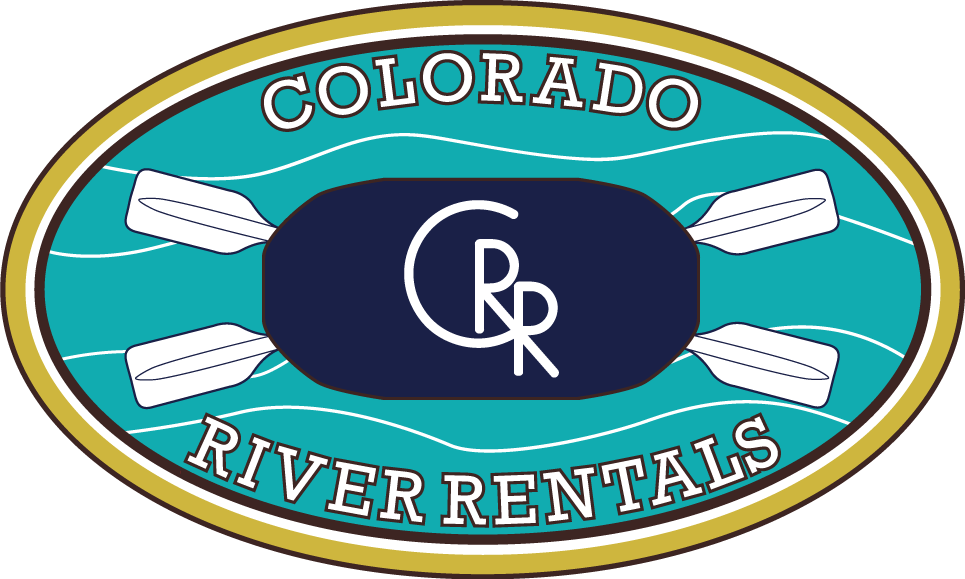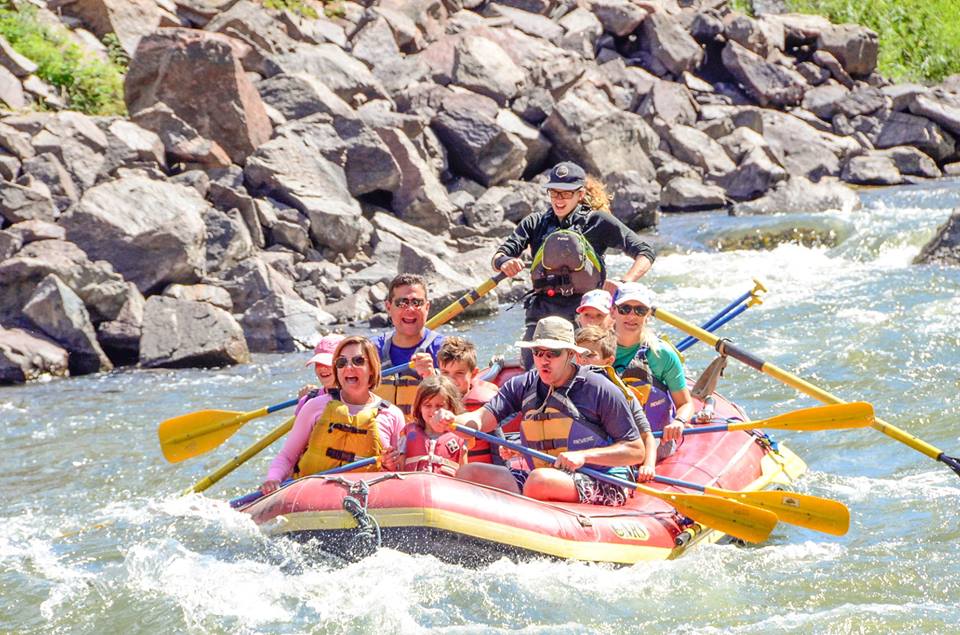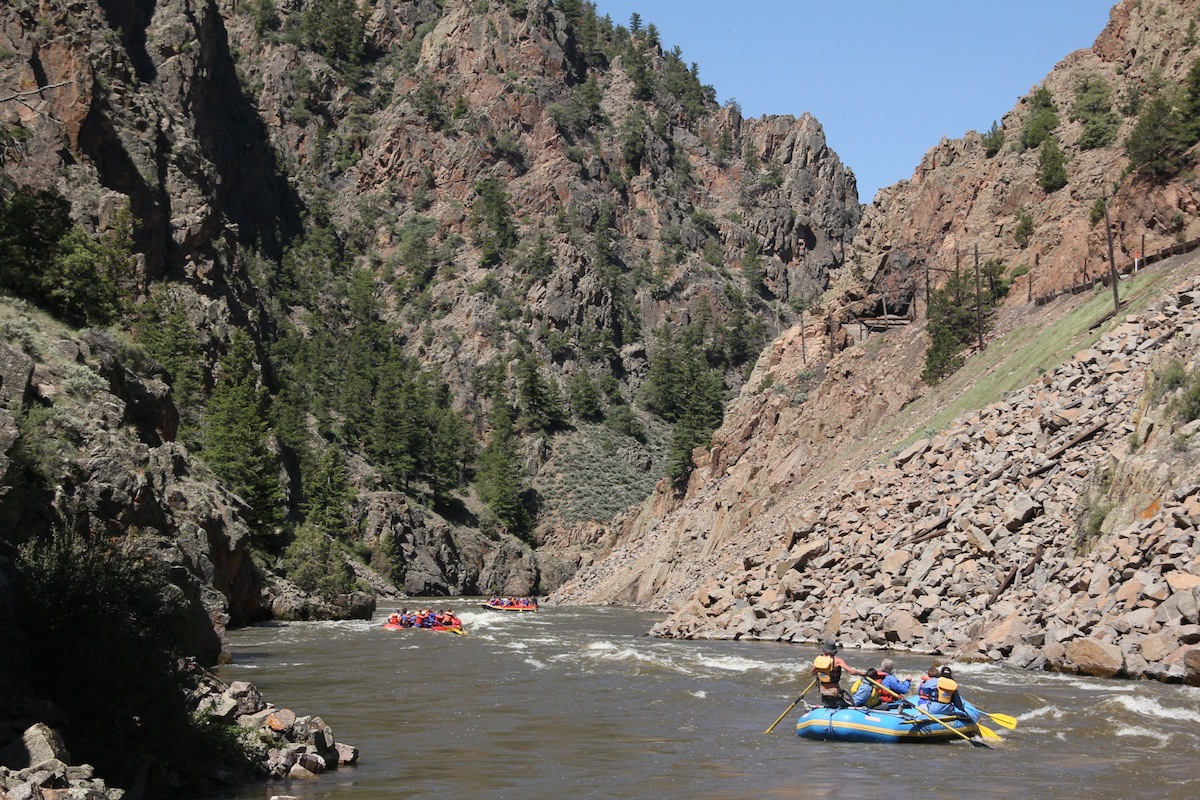Rafting Trips in Colorado During High Water Times

Each spring, the snow across Colorado’s mountains starts to melt and trickle down into the rivers across the state. A very popular river in Colorado is the Colorado River which begins high in Rocky Mountain National Park, flows west towards Grand Lake, Kremmling, and beyond. Water runs off the high peaks of the Continental Divide and heads east towards the Atlantic Ocean or west towards the Pacific Ocean.
High water in Colorado
The amount of snow that we receive in the Rockies over the winter, directly affects the water levels of the rives in Colorado throughout the rest of the year. More snow = more water and more water = different physical levels of whitewater rafting. However, just because you get a lot of snow once winter, does not mean you will have a summer full of high water. High water could happen if it gets really warm really quickly and then the water can completely level off and be normal the rest of the summer. Additionally, if we don’t see high temperatures, that snow will melt very slowly and again we will not see high water. IF we do run into a high water period in Colorado, you will still have plenty of options!
Just a bit more information on high water
When you run a river, the water volume is very important. Too little water, and there simply is not enough of it to navigate the rapids. Too much water, and you have a mess of water that most guides will steer clear of. These high water and low water limits are set my professionals and are not negotiable. If the river you have booked a trip on is too high, you’ll have the option to reschedule or switch to a different section of the river with more appropriate water levels.
Snow melt is not the only contributing factor to water levels in rivers across Colorado. Some are managed by the Voluntary Flow Management Program (VFMP). Under this program a flow of 700 CFS (cubic feet per second) is maintained through mid-August. Sometimes the combination of the water released and the snow melt makes for some fantastic high water. Allowing rafters to experience some of the best white water in the world.
When is high water season in Colorado?
High water season is typically from mid-May to mid-June across Colorado. According to Eric Riley, founder of Swiftwater Safety Institute “High water may last a few weeks in thin snowpack years, or prevail for a month or longer depending on how warm it is, how consistently warm it stays, and how cold it is getting in the high mountains at night.”
What to expect during high water season?
In addition to cold, fast moving water and dangerous debris like trees and root balls can create dangerous features in the water. Additionally, unpredictable crashing waves from unusual angles, strong eddylines and boils are something that guides are focused on during high water. Expect a faster paced trip that will require more physical activity. You will get wet, move fast, paddle hard and have a lot of fun! Safety is the number one concer, but there are plenty of ways to stay safe even during high water.
Common Changes to expect from high water?
- Minimum Age: During the high water season, it is common for minimum ages on each section of the river to increase. Sometimes sections increase from age 5 to age 7. However other times it can be from age 12 to age 15. If everyone in your group is 50 and older, then minimum age increases will not affect you all.
- Trip duration: During high water, you trip will run faster than normal. How fast you get through he section of the river is directly affected by the CFS and as it gets higher you will move through the water much quicker. Unfortunately, there is nothing that guides can do to slow down your trip so just enjoy every second of it!
- Class changes: Rapids can increase by size and therefore, the rafting professionals will change their level. This level is basically how much physical exertion will be required through the rapids. Therefore, expect to paddle a little longer and harder during high water.
These are some things that can change for your groups during a high water time, but don’t let that deter you from rafting. It is just best to know what your group is looking for and you will be able to find a trip no matter what the water levels are.
Best trips to book during high water?
- Upper Colorado: We recommend this trip, because high water does not affect this stretch of the Colorado River the same way it affects other rivers and sections. It is great for young kids and age minimums typically only increase to age 5 during the high water time and are usually age
- Browns Canyon: This is the perfect trip for groups with people ages 15 and older. It is stunning, adventurous and just downright fun. However, during high water, ages can increase all the way from age 7 to age 15.
- Ziplining/Via Ferrata: There is plenty to do in Colorado even during high water and one way to not worry about the affects of high water is to book an adventure on the land. Our most popular are ziplining, via ferrata, horseback riding, and UTV rentals.
Check out these current conditions on each Colorado river to help determine the best river for you and your group to raft.
The most important thing to remember is the fact that river conditions are constantly changing. Regardless of water levels make sure to select the correct river difficulty for your group. Commercial rafting companies will raise the minimum age of guests based on high water. This is based on safety reasons and please take them seriously. To learn more about all trip options visit: https://www.coloradorafting.net/finder/




